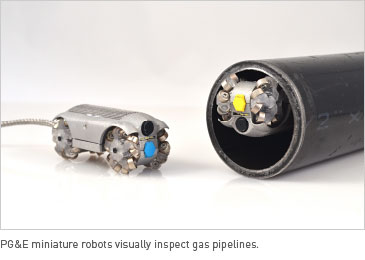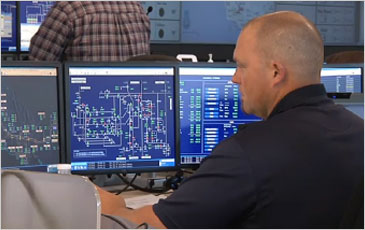©2026 Pacific Gas and Electric Company
Error: Field cannot be left blank.
Error: Invalid entry. Do not use equal signs [=] or colons [:].
This summary is not available. For more details, open this PDF.
- Still need assistance? Try the Help Center.
- Link accounts. Learn how to link your accounts or access more accounts.
- CARE. Find out if you qualify for a discount.
- Medical Baseline. Learn how to apply.
- Rebates. Explore PG&E rebates for your home.
- Outages. Report and view electric outages.
- Jobs/Careers. Find out about jobs at PG&E.
Error: Field cannot be left blank.
Error: Invalid entry. Do not use equal signs [=] or colons [:].
This summary is not available. For more details, open this PDF.
- Still need assistance? Try the Help Center.
- Link accounts. Learn how to link your accounts or access more accounts.
- CARE. Find out if you qualify for a discount.
- Medical Baseline. Learn how to apply.
- Rebates. Explore PG&E rebates for your home.
- Outages. Report and view electric outages.
- Jobs/Careers. Find out about jobs at PG&E.
High-tech gas tools
Inspection robots

Building on our efforts to enhance pipeline safety throughout northern and central California, PG&E has been an industry leader in supporting investments in new technology—including inspection robots.
In 2014, PG&E tested and implemented a variety of gas pipeline inspection robots. One such inspection robot is a customized "smart pig," which travels inside transmission pipelines and captures detailed information about the inside of the pipe without any interruption to gas service. These smart pigs travel inside pipelines to identify dents, cracks and corrosion before they become a problem.
Smart pigs rely on GPS mapping data, magnetic sensors and other technology to record detailed information from inside the pipeline. They can find defects as well as measure the thickness of pipeline walls. And, if corrosion or any other signs of weakness are found, repair crews are able to reach the part of the pipeline that needs work with precision.
PG&E also began testing a miniature robot that will allow the visual inspection of natural gas pipelines for signs of corrosion without the need for disruptive construction digs. PG&E joined with NYSEARCH—a voluntary research organization representing several gas companies in North America—and Honeybee Robotics to develop the robot prototype.

This robot is designed to travel through tight, rounded vents to the space between the pipe and casing to record the condition of each covered segment. The integrated cameras will allow PG&E gas crews to visually examine the health of the external surface of the pipe, the condition of the protective casing, detect any liquids and determine whether there is undesired contact between the pipe and casing.
PG&E has added another tool in its toolbox as it continues its progress to improve the safety and reliability of its gas system. Called the Pipetel Explorer, the untethered robotic device allows crews to inspect pipelines that are not accessible to other in-line inspection devices. The battery-powered robot can travel through a gas pipeline to identify defects in pipe walls. This device can successfully identify, size and pinpoint dents, metal loss and other potential issues. It is 12 feet long, weighs 250 pounds and has cameras on each end.
Piccaro car
In recent years, PG&E has made significant progress in finding and fixing natural gas leaks on its 80,000-mile transmission and distribution gas system, including a 99 percent reduction in non-hazardous leaks in its backlog in 2013.
PG&E was the first utility in the country to test and deploy the industry's most sophisticated car-mounted leak detection system, which is 1,000 times more sensitive than traditional equipment. PG&E collaborated with the Silicon Valley-based Picarro scientists to refine the natural gas detection system.

The technology uses GPS to pinpoint even the most miniscule natural gas leak. Natural gas molecules are measured with a near-infrared laser. A high-precision wavelength monitor, meanwhile, ensures that only natural gas is being monitored, virtually eliminating the interference of other gases. Leaks are displayed on an iPad secured on the dashboard. If the system is in surveying mode, the information is automatically sent in real-time to Picarro's headquarters.
The technology also can tell in less than 10 minutes whether the gas being detected is natural gas or naturally occurring methane. Determining the exact type of gas using traditional leak-surveying would involve using a syringe to collect the gas and testing it a lab, a process that could take as long as a week.
PG&E's crews are now able to find 80 percent more leaks using this device, and the company is responding by accelerating repairs and increasing any necessary pipe replacement.
Currently, PG&E has six vehicles mounted with the Picarro Surveyor, with plans to add four more by the end of 2015.
Learn how PG&E surveys for leaks
Discover how PG&E leak detection is more accurate than ever
PG&E regularly surveys our 70,000-square mile service area for gas leaks. This PG&E program resulted in a 99 percent reduction of minor leaks. We can identify and fix natural gas leaks to enhance public safety, help protect the environment and create jobs. PG&E uses various techniques to identify the leaks’ locations.
Discover various PG&E survey methods
PG&E surveys our service area in Central and Northern California by land, in the air and even from a boat. The surveys help ensure that the pipelines are safe from all angles.
Find out more about Detector Pak-Infrared™ (DP-IR) scanning
PG&E uses a device known as DP-IR to detect methane gas. The DP-IR is a highly advanced system that does not give a false alarm for other hydrocarbon gases. This device helps PG&E quickly locate and assess potential leaks. The DP-IR can work in a variety of weather conditions, due to its rugged design. There are 150 DP-IR units deployed in our service area. They allow PG&E to monitor and prioritize the pipelines that need repair.
Learn how PG&E uses Mars Rover technology for gas leak detection
PG&E is adapting Mars Rover technology to find potential gas leaks. The laser-based technology was designed to find methane on Mars, a possible sign of life. The National Aeronautics and Space Administration (NASA) and PG&E are working together to adapt the technology. PG&E crews use a device with a tablet interface to identify and repair leaks. The device is now extremely sensitive towards methane. The tool is lightweight, easy to use and a thousand times more sensitive than traditional tools.
Discover how PG&E identifies gas leaks from the air
PG&E hires flight crews to fly 500 feet above four PG&E gas transmission pipelines. The crews include the helicopter pilot and a spotter. The spotter uses a GPS-enabled tablet to map new construction projects near pipelines. They also take photos of construction through a camera mounted on the helicopter.
On an average day, the crew identifies two or three immediate threats. The threats might include construction crews who are digging too close to pipelines. Other threats include improper excavation techniques. The crews inform PG&E about these threats. We then dispatch frontline supervisors to the site to prevent pipeline damage. PG&E uses this opportunity to teach the customer about safe digging practices.
Automated safety valve installation

The valve automation system is a tool that PG&E uses to keep our customers safe. The system allows us to quickly shut off the flow of gas when a significant change in pressure occurs. We can remotely open or close valves from the newly designed PG&E Gas Control Center.
PG&E also has 14 automatic shutoff valves. They're installed where transmission pipelines cross major fault lines. The valves automatically close if there is a possible pipeline rupture.
Additional resources
Pipeline
Read more about pipeline inspection, replacement, and safety initiatives
©2026 Pacific Gas and Electric Company
